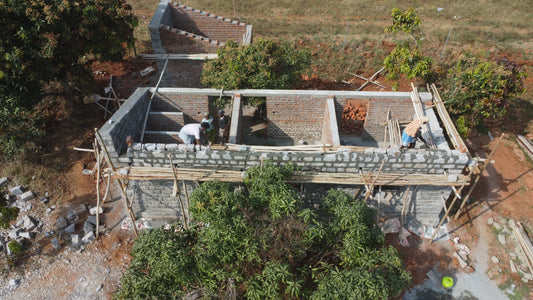 Two Days of the Chittirai Festival : A Historical Glimpse into Thirumalai Nayakars Madurai on the Shared Semi-Urban Landscape and a ritual expansion that has grown into one of the largest festivals in India today.
Two Days of the Chittirai Festival : A Historical Glimpse into Thirumalai Nayakars Madurai on the Shared Semi-Urban Landscape and a ritual expansion that has grown into one of the largest festivals in India today.


Expansion of Madurai and Thirumalai Nayak’s contribution to the Chittirai festival
Madurai, one of the world’s oldest inhabited cities, has seen major expansions during the Nayak and British periods. The first occurred in 1559 under Visvanatha Nayaka, who demolished Pandya fortifications around Chithirai street and extended the city to the Masi streets. The second expansion occurred in 1837 under British Collector Blackburne, who demolished the Nayak fort walls, which led to the creation of new roads, including Veli, Marret and Perumal maistry Streets.

Thirumalai Nayaka (1623–1659) significantly influenced the Chittirai festival. He moved the 12-day Masi festival to Chittirai and widened Masi streets for the grand wooden chariot procession. He also relocated the Kallazhagar festival’s fifth-day halt closer to the city, enhancing its accessibility. These changes integrated the Meenakshi and Alagar festivals sequentially, shaping Madurai’s cultural identity. Street names reflect Tamil months, aligning with temple processions, a tradition rooted in these historical developments.


Illustrative documentation that was displayed on the streets on Madurai as below :

The image above depicts — from left to right — (Day 11) one of the two grand wooden chariots featured in the procession of the Chittirai Festival (Meenakshi Sundareshwarar Therottam), gracefully moving along the corner of North and East Masi Streets in the fortified city of Madurai. This location lies near the city's northern gate, the main entrance to the historic Madurai fort.
The fort wall comprises a rampart adorned with square bastions and weathered cannons. Below it lies a faussebraye lined with circular bastions, now softened by overgrown vegetation. This fortified structure was once guarded by 720 soldiers from 72 palayams under the rule of the Madurai Nayaka dynasty. Enclosing it all is a deep moat.

Beyond this age-old threshold, a road stretches forward, bordered by fertile fields. This path leads to a bridge spanning the Kirudumal River — a small river that serves as a source of irrigation for the city. Just across the bridge stands a small temple that houses one of Madurai’s 21 guardian deities, believed to safeguard the city, as mentioned in Kaaval Kottam.
(Day 14) Continuing along this road, one eventually reaches the banks of the Vaigai River. The sandy riverbed, with its sparse vegetation, serves as the backdrop for the procession of the Chittirai Festival, where Kallazhagar makes his sacred descent — Vaigai Aatril Ezhuntharulal — an event that unfolds upon the riverbed.
The image reflects the visionary intervention of Thirumalai Nayaka, who unified Shaivite and Vaishnavite belief systems and rituals, set against the backdrop of massive architectural monuments and the soft landscape along the edge of Madurai’s historic core — a ritual expansion that has grown into one of the largest festivals in India today.
Illustration and Facilitated by: Renga Bashyam R B, Conservation Architect
Team :
Ar. Akeel Alawdeen Kamal A., Architect
Ar. Nikil Vinayak M., Architect
Er. Ram Vignesh G., Computer Engineer
Ar. Renga Bashyam R. B., Conservation Architect
Sarves Waran G., Student
Ar. Vijay Kumar S., Architect





